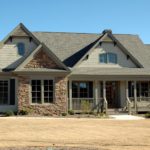Traditional remodeling is not kind to the environment. Even a small remodeling job can create a dumpster full of landfill. New materials require resources to construct and ship. Many new synthetic materials are cheaper alternatives to natural materials but come at an environmental cost. For example, new synthetic carpeting can off-gas harmful chemicals into your home. It’s not surprising that EPA studies show that while Americans spend an average of 90% of their time indoors, indoor air quality is getting worse. Among the causes of increased indoor air pollution are “increased use of synthetic building materials, furnishings, personal care products, pesticides, and household cleaners.” To combat the adverse effects of construction and remodeling on the environment and personal health, many are turning to green solutions. But is green remodeling the wave of the future or just a niche fad?
What is Green Remodeling
As a contractor, you may be called on at times to do remodeling. Some projects are large commercial jobs, for example, to customize a new office space for the needs of a new tenant. Other jobs may be smaller and more personal, such as residential kitchen remodels or home additions. Whatever the scale of the remodel, contractors are increasingly being called on to do green remodeling. As a contractor in the current market, it is your responsibility to be familiar with this growing trend.
Green building and green remodeling can mean different things to different clients. There are some certifications, such as Energy Star ratings and LEED Certification. However, more often than not, green is in the eye of the beholder. Green remodeling may refer to construction practices, materials and sourcing, energy and resource efficiency, or any combination of the above. The extent of green practices will also depend on the needs and budget of the client. In some cases, certain ideals may need to be compromised to stay on budget.
Whatever the client’s definition of green remodeling is, it is crucial that the contractor and client are in agreement. Many clients who want green remodeling will come in with a lot of research about the practice and may have some grand ideas. As a contractor, you should be just as knowledgeable and prepared to serve as a reality check on what is really possible for a particular project.
Green and Sustainably Sourced Materials
One major focus of green remodeling is the health and sustainability of the materials being used. Again, just as there is no set definition of green remodeling, there are no objective standards for green materials. The EPA has not endorsed any definite meaning of common terms such as “organic”, “sustainable”, “natural”, or “recycled” materials. It is up to the client and the contractor to responsibly source building materials.
Recycled and reclaimed materials are the height of sustainable constructions. Reclaimed wood typically comes from old wooden structures that are no longer viable for repair and reuse. One of the most abundant sources of reclaimed wood is barns that are being demolished. Recovering the wood from these structures avoids adding the materials to landfills and provides fresh building materials that don’t require more logging. Other sources of reclaimed wood include warehouses, mills, and factories. These old buildings can provide large structural beams as well as planks used in floors, walls, and decking. In the last decade or two, a burgeoning market has arisen around reclaimed wood, and there are several large companies that specialize in the material.
Other recycled materials can include fixtures rescued from old buildings as well as metal plumbing and even copper wire. Reusing fixtures and materials can be a design decision as much as a green one. Often these reclaimed materials are just as accurately described as antique.
Reclaimed materials don’t have to come from decades or centuries-old buildings. The cost and environmental impact of shipping large quantities of reclaimed materials can sometimes make the materials less sustainable overall. Instead, look for local sources, including your own building. Instead of dumbing demolished material in a landfill, see what you can repurpose for use in other parts of the remodel.
Energy Efficiency in Green Homes
Sustainably sourced materials are great for reducing the initial impact of construction. But to maintain that green benefit well into the life of the remodel, it is critical to consider energy and resource efficiency. Simply put, a building that is build to use less energy, water, and other resources will have a smaller environmental footprint over many years.
Fortunately, there are some standards and certifications that can help with selecting green appliances. The most well-known certification is courtesy of the United States EPA, the Energy Star rating. Energy Star ratings and certification indicate appliances and other products that use fewer resources such as electricity and water. Installing Energy Star appliances can save on money and environmental impact.
One way to save energy is with proper insulation. A well-insulated building uses less heat in the winter and air conditioning in the summer. However, green insulation materials can be hard to find. Often, insulation materials are not sustainably produced, unless you specifically seek out recycled materials. However, whatever the source of the insulation, proper insulation will save on the costs and environmental harm of electricity use.
Double-paned and glazed windows are another way to save on energy use. The up-front costs are higher than standard windows, but the costs can be recovered in lower utility bills. Another way to make your windows environmentally friendly is to use wooden-framed windows. Windows are often made with metal or plastic frames, which have a heavy environmental impact and can off-gas harmful toxins. Wood frames are a durable and healthy alternative.
The Health Impacts of Green Remodeling
Green remodeling can have significant health benefits in the short and long-run. In the near-term, during construction, green practices can lower harm to the environment and human health. One essential practice of green remodeling is to avoid wholesale demolition in favor of careful deconstructions. This preserves materials for reuse instead of landfill. It also means less dust and harmful substances in the air. That’s great news for you and your workers since many older buildings are constructed with materials that can be hazardous when demolished.
The use of natural materials over synthetic materials is also a green choice that can preserve the health of the future occupants. Many synthetics can off-gas harmful toxins. New synthetic carpets are particularly notorious offenders. Both the synthetic materials and the glue used to install them can become sources of air pollution. Opting for wool carpet or other natural fibers can avoid the off-gassing issue.
Some synthetic building materials can also contain harmful chemicals. For instance, many types of synthetic or engineered wood contain formaldehyde. Over time, that formaldehyde is released into the air. Some sealants are also toxic. Using natural materials in the kitchen, such as hardwood flooring, stone backsplashes, and granite countertops can avoid nasty chemicals.
Green Remodeling Certifications
One way for your business to stand out from the crowd is to master green building techniques. If you have collected skills, knowledge, and experience in green building, you may consider becoming LEED certified. LEED certification can apply to buildings and to contractors. It is a measure of efficiency and environmental impact that takes in the whole building. It can be a tough certification to acquire, but having it can be useful for your business. Some larger commercial project may only hire LEED certified contractors. Meanwhile, for environmentally conscious homeowners, LEED certification shows your knowledge of and dedication to green building and remodeling.
When Business Get Complicated, Call Needo
It may seem like green building can get complicated. Keeping track of materials, processes, and laborers can be tedious and time-consuming. With Needo software, much of what you need to do is automated, and the rest is easy to format and record. At the end of a project, Needo software will also help collect all the necessary information and deliver a professional, details invoice.


